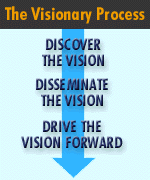Congress President Sonia Gandhi has refused to disclose details of her
Income Tax returns under the Right To Information (RTI) act citing
security risk for which she could be in trouble.
Congress leaders have also defended her stand saying the details could be misused if made public. The information is with the I-T department and should not be accessed by public.
Reports said that Sonia Gandhi refused to provide details of her I-T returns after Chennai-based RTI activist V Gopalakrishnan had sought details of her I-T returns from 2000 to 2011.
It came to light when Assistant Commissioner of Income Tax in New Delhi asked Sonia Gandhi on January 23 under section 11 of the RTI Act, 2005 seeking her response to an RTI application moved by Gopalakrishnan.
Congress leaders have also defended her stand saying the details could be misused if made public. The information is with the I-T department and should not be accessed by public.
Reports said that Sonia Gandhi refused to provide details of her I-T returns after Chennai-based RTI activist V Gopalakrishnan had sought details of her I-T returns from 2000 to 2011.
It came to light when Assistant Commissioner of Income Tax in New Delhi asked Sonia Gandhi on January 23 under section 11 of the RTI Act, 2005 seeking her response to an RTI application moved by Gopalakrishnan.




